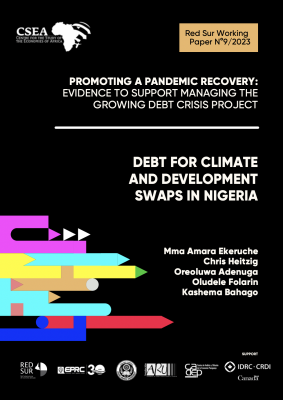
Africa’s largest economy has found itself in an increasingly vulnerable financial position due to several shocks in the past decade. It relied on private creditors to compensate for revenue shortfalls in 2016 and 2017 after the collapse of commodity prices. The COVID-19 pandemic induced more borrowing, this time from multilateral sources. These events have led to the highest external debt levels in Nigeria since 2004.
Increased debt levels clogged financing for key SDG outcomes relating to social welfare sectors more broadly and gender equality and the environment in particular. This paper explored the need for, viability of, and impacts of debt swaps in Nigeria. It focused on two sources of debt that are mostly likely to be involved in a debt swap: Paris Club ODA debt and underperforming private sector debt. These two sources together comprise a sum of more than $3.7 billion whose exchange could free up resources to fund development priorities for facilitators of the debt swap. If the entirety of the eligible debt were to be swapped, it would create an average of nearly $300 million of budgetary resources (per year) for the next six years. Beyond funding development projects, remaining funds could decrease the debt burden, provided they do not beget additional borrowing. The paper also traced the experiences of five countries participating in debt-for-nature swaps.
See all the recommendations from this Working Document!
Click here to see all the results from this global project
